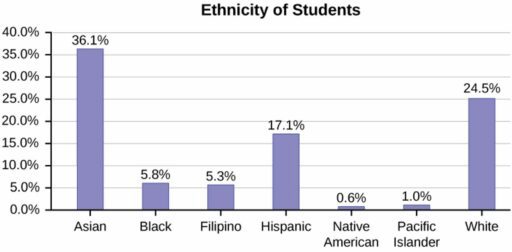Table of Contents
In the realm of data analysis, the range is a fundamental metric that captures the span between the lowest and highest values within a dataset. It’s a simple yet insightful tool for understanding variability, identifying outliers, and comparing datasets. This article delves into the multifaceted role of range, exploring how it enhances data interpretation and supports strategic decision-making.
Key Takeaways
- Range is a critical measure of variability that highlights the spread of data points from the minimum to the maximum value, offering a snapshot of data dispersion.
- The range is instrumental in identifying outliers, which are extreme values that can significantly skew the results of a dataset and affect the overall analysis.
- Using the range to compare datasets can reveal differences in variability and consistency, aiding in the assessment of relative dispersion across multiple datasets.
- A large range indicates a wide dispersion of values, suggesting greater variability within the dataset, whereas a small range points to a more concentrated cluster of data points.
- The range serves as a powerful tool for real-world applications, enhancing analytical accuracy and informing strategic decisions based on the understanding of data spread.
Understanding the Concept of Range in Data Analysis

Defining Range and Its Role in Data Interpretation
In the realm of data analysis, the range is a fundamental indicator of a dataset’s variability. It is calculated simply by subtracting the lowest value in the dataset from the highest. This measure of dispersion is essential for understanding the breadth of data points and for identifying any extreme values that could skew the analysis.
The range provides a quick snapshot of the data’s spread, offering immediate insight into the extent of variation within the dataset.
While the range is a straightforward concept, its implications are significant. It lays the groundwork for more complex statistical analysis and helps to set the stage for a deeper exploration of the data. Analysts often use the range as a starting point to assess the overall distribution before delving into more nuanced measures such as the mean, median, and standard deviation.
- Identify the highest and lowest values
- Calculate the difference between these two values
- Interpret the result to understand the data’s variability
By mastering the concept of range, analysts can better interpret their data and draw more accurate conclusions, ensuring that their findings are both meaningful and reliable.
Range: Unraveling Variability
The concept of range is pivotal in understanding the variability within a dataset. It is the simplest measure of variability, providing a quick glimpse into the spread of data points by considering only the highest and lowest values. Here’s how range can be calculated:
- Identify the maximum value in the dataset.
- Identify the minimum value in the dataset.
- Calculate the difference between these two values.
The range is a fundamental tool in data analysis, offering initial insights into the potential breadth of data values.
While range is a valuable indicator of variability, it is important to note its limitations. It does not reflect the distribution of all data points and is particularly sensitive to outliers, which can skew the range significantly. Therefore, range should be used as a starting point rather than a definitive measure of variability.
Analyzing Data Through the Range
When we analyze data, the range provides a quick snapshot of the spread of values within a dataset. It is a fundamental step in understanding the overall variability of the data. By calculating the difference between the highest and lowest values, we gain immediate insight into the extent of data dispersion.
The range is particularly useful in identifying extreme values that may skew the analysis. For instance, in a set of test scores, a single extremely high or low score can significantly affect the range. This can signal the need for further investigation into the causes of such outliers.
To effectively use the range in analysis, consider the following steps:
- Collect the dataset.
- Identify the maximum and minimum values.
- Calculate the range by subtracting the minimum from the maximum.
- Interpret the results in the context of the data.
The simplicity of the range makes it an accessible tool for analysts at all levels, providing a clear metric for comparison and interpretation.
The Importance of Range in Data Analysis

Identifying Outliers and Their Impact on Data
Outliers are data points that deviate markedly from the rest of the data set. They are not just statistical anomalies but can be indicators of a significant error or a unique phenomenon worth investigating. Identifying outliers is a critical step in data analysis as they can distort the overall picture and lead to incorrect conclusions.
When analyzing data, it’s essential to determine whether outliers are the result of data entry errors, measurement errors, or experimental errors, or if they actually represent a true deviation from the expected trend. Once identified, the decision to exclude or include an outlier should be based on a thorough understanding of the data and its context.
The presence of outliers can lead to misleading insights, incorrect predictions, and inaccurate conclusions. As a result, it is crucial to understand outliers and their potential effects on data analysis.
By examining the range of a dataset, it becomes easier to spot any outliers. For instance, consider a dataset with values primarily between 10 and 100. If a value like 500 appears, it stands out as an outlier. The impact of outliers can be substantial, affecting mean values and potentially skewing the analysis. It is therefore imperative to handle them with care.
Examining Dispersion Using the Range
The range is a fundamental statistic in data analysis, representing the difference between the largest and smallest values in a dataset. It provides a quick snapshot of data dispersion, indicating how spread out the data points are. A small range suggests that the data points are closely packed, while a large range indicates a wider spread of values.
The range, while simplistic, is a crucial first step in understanding the overall variability within a dataset. It sets the stage for more complex measures of dispersion, such as variance and standard deviation.
To illustrate, consider a dataset of exam scores ranging from 60 to 95. The range is calculated as 95 minus 60, resulting in a range of 35. This single figure, however, doesn’t reveal the distribution of scores between these two extremes. For a more nuanced view, other statistical tools must be employed.
Despite its simplicity, the range is a valuable tool for initial data exploration. It can quickly highlight potential outliers and provide a baseline for comparing datasets. Yet, it’s important to recognize its limitations and complement it with other measures for a comprehensive analysis.
Insights into Data Spread and Variability
Understanding the spread of data is a fundamental aspect of data analysis. The range is a simple yet powerful tool that provides immediate insight into the variability of a dataset. A larger range signifies a broader dispersion of data points, indicating more variability within the dataset. Conversely, a smaller range implies a tighter clustering of values, suggesting less variability and more consistency among the data points.
The concept of range is particularly useful when comparing datasets. Consider two datasets: Dataset A with values ranging from 10 to 50, and Dataset B with values from 40 to 50. Despite having the same maximum value, Dataset A exhibits a wider range, thus revealing a greater spread of data. This comparison is succinctly illustrated in the table below:
| Dataset | Minimum Value | Maximum Value | Range |
|---|---|---|---|
| A | 10 | 50 | 40 |
| B | 40 | 50 | 10 |
The range not only quantifies the spread but also aids in visualizing the distribution of data points across the spectrum. It is a straightforward measure that, when combined with other statistical tools like variance and standard deviation, enriches our understanding of a dataset’s characteristics.
In the context of data analysis, the range can highlight potential outliers or unusual data points that may warrant further investigation. It is a stepping stone to more complex measures of dispersion, such as variance and z scores, which provide a deeper quantitative understanding of data spread.
Advantages of Using Range in Data Analysis

Simplifying Outlier Detection
The range of a dataset is a simple yet powerful tool for quick identification of outliers. Outliers are data points that fall significantly outside the normal range of values, and their presence can distort the true understanding of data. For instance, in a dataset with values ranging from 10 to 100, a data point of 500 would be an outlier.
By establishing the minimum and maximum values, analysts can swiftly pinpoint anomalies without complex statistical methods. This straightforward approach aids in maintaining the integrity of data analysis.
The ease of outlier detection through range analysis underscores its utility in data preprocessing, ensuring that subsequent analysis is not adversely affected by extreme values.
Here’s a summary of the steps involved in outlier detection using range:
- Determine the minimum and maximum values of the dataset.
- Define the normal range of data based on domain knowledge or statistical criteria.
- Identify any data points that fall outside the normal range as potential outliers.
- Investigate the outliers to decide on their treatment or exclusion from the dataset.
Facilitating Dataset Comparisons
The range of a dataset is a simple yet powerful tool for comparing multiple datasets. It provides immediate insight into the variability and consistency of different data collections. For example, when comparing customer satisfaction scores for two products, the range can reveal which product experiences more consistent satisfaction levels or greater fluctuations in customer opinions.
Comparing the ranges of two groups’ test scores can also highlight differences in variability. Consider the following table:
| Group | Score Range |
|---|---|
| A | 20 – 80 |
| B | 30 – 70 |
This table shows that Group A has a wider range of scores, suggesting more variability compared to Group B.
The range is particularly effective when datasets have similar means but different spreads. A dataset with a mean of 50 and a range of 0 to 100 is significantly more dispersed than one with the same mean but a range of 0 to 10.
Understanding these differences is crucial for making informed decisions, whether it’s about product improvements or identifying which group requires additional support based on test scores.
Understanding Data Dispersion
Data analysis is not just about the central tendency of a dataset, such as the mean or median, but also about how the data points are spread out. Understanding data dispersion is key to interpreting the full story behind the numbers. Dispersion measures, including the range, variance, and standard deviation, provide insights into the variability of the data.
Dispersion can highlight the consistency or inconsistency within a dataset. For instance, a small range indicates that the data points are closely packed around the central value, suggesting consistency. Conversely, a large range suggests greater variability and potential outliers. Here’s a simple illustration of how range can reflect dispersion in two datasets:
| Dataset | Minimum Value | Maximum Value | Range |
|---|---|---|---|
| A | 10 | 50 | 40 |
| B | 20 | 35 | 15 |
Dispersion is a lens through which the spread and reliability of data can be assessed. It is essential for understanding the extent to which data points deviate from the expected norm.
By examining dispersion, we can make more informed decisions and draw more accurate conclusions, ensuring that our analysis captures the complexity of the data.
Comparing Datasets with Range

Assessing Variability Across Different Datasets
When analyzing multiple datasets, the range serves as a straightforward metric for comparing variability. It highlights the extent to which data values spread from the lowest to the highest point. For example, consider two groups’ test scores: Group A with a range of 20-80 and Group B with a range of 30-70. This comparison reveals that Group A exhibits a wider spread of scores, suggesting greater variability in performance.
| Group | Minimum Score | Maximum Score | Range |
|---|---|---|---|
| A | 20 | 80 | 60 |
| B | 30 | 70 | 40 |
Similarly, datasets with similar means but differing ranges can tell a story of their own. A dataset with a mean of 50 and a range of 0 to 100 suggests a more diverse set of values than one with the same mean but a range of 0 to 10. The latter implies a tighter clustering of data points around the mean.
The simplicity of the range makes it an invaluable tool for initial comparisons, providing immediate insights into the spread of data across different datasets or within subsets of a single dataset.
Interpreting Consistency and Fluctuations in Data
In the realm of data analysis, the range is a simple yet powerful tool for interpreting consistency and fluctuations within a dataset. It highlights the extent of variability by marking the difference between the highest and lowest values. This measure can be particularly revealing when comparing datasets from different sources or time periods.
For instance, consider the following table showing the range of temperatures for two cities over a week:
| Day | City A (Range in \(\degree C)) | City B (Range in \(\degree C)) |
|---|---|---|
| Monday | 5 – 15 | 8 – 22 |
| Tuesday | 6 – 14 | 7 – 20 |
| Wednesday | 7 – 16 | 10 – 25 |
| Thursday | 4 – 13 | 9 – 23 |
| Friday | 5 – 15 | 11 – 24 |
| Saturday | 6 – 17 | 12 – 26 |
| Sunday | 4 – 14 | 10 – 27 |
The table illustrates that City B experiences a wider range of temperatures, indicating more significant fluctuations and potentially less consistency in weather patterns compared to City A.
By examining the range, analysts can deduce whether the data behaves in a predictable manner or if there are anomalies that could suggest deeper issues or insights.
Understanding the range within the context of data analysis is essential for making informed decisions. It allows for a quick assessment of data spread and can be a preliminary step in identifying areas that require a more detailed investigation.
Range as a Comparative Tool
The range of a dataset is a straightforward yet potent metric for comparing different sets of data. By examining the range, analysts can quickly gauge the variability and consistency of data across multiple datasets. For example, consider two datasets with the following ranges:
| Dataset | Minimum Value | Maximum Value | Range |
|---|---|---|---|
| A | 10 | 90 | 80 |
| B | 20 | 70 | 50 |
Dataset A exhibits a wider range, indicating a greater spread of data points than Dataset B. This comparison can reveal underlying patterns or inconsistencies that may not be immediately apparent.
The simplicity of the range makes it an invaluable tool in preliminary data analysis, allowing for a quick assessment of data spread before delving into more complex statistical measures.
When used judiciously, the range can provide a snapshot of data dispersion, offering a clear perspective on the extent of variability within and between datasets. It is essential, however, to consider the range alongside other statistical tools to form a comprehensive understanding of the data’s characteristics.
Embracing the Power of Range in Data Analysis
Range in Context: Real-World Applications
The range is a fundamental metric in data analysis, offering a quick glimpse into the variability of a dataset. It is particularly useful in real-world scenarios where understanding the spread of data is crucial. For instance, in customer satisfaction analysis, the range can highlight the difference between the most and least satisfied customers, providing a straightforward measure of overall satisfaction variability.
In the context of test scores, the range can reveal the disparity in performance among students. A school might observe that one class has a range of test scores from 20 to 80, while another has a more compact range of 30 to 70. This comparison suggests that the first class has a greater diversity in student performance.
The simplicity of the range makes it an invaluable tool for initial data exploration, offering a snapshot of data spread that can guide further analysis.
When comparing datasets, the range serves as a quick reference to assess relative variability. For example, two products with customer satisfaction ranges of 10-50 and 40-50 respectively, indicate that the first product experiences a broader spectrum of customer opinions. This insight is essential for businesses aiming to understand and improve client experiences.
Enhancing Analytical Accuracy with Range
The use of range in data analysis is pivotal for enhancing the accuracy of our insights. By quantifying the spread between the minimum and maximum values, we gain a clear understanding of the dataset’s variability. This precision is crucial when making strategic decisions based on data analysis.
The range provides a straightforward metric for assessing the extent of data dispersion, which is essential for accurate interpretation.
In practice, the range can help to quickly identify anomalies or outliers that may skew the overall analysis. For instance, a dataset with a large range may indicate the presence of extreme values that warrant further investigation. Conversely, a small range suggests a more consistent set of data points.
Here is an example of how range can be used to compare two datasets:
| Dataset | Minimum Value | Maximum Value | Range |
|---|---|---|---|
| A | 10 | 100 | 90 |
| B | 20 | 80 | 60 |
Dataset A has a larger range, indicating greater variability, which could be a result of outliers or a wider spread of data points. Dataset B’s smaller range suggests tighter data clustering. Understanding these nuances aids analysts in making more informed decisions and in tailoring their analytical approaches to the specific characteristics of the data.
Strategic Decision-Making Based on Range Analysis
In the realm of strategic decision-making, the range of a dataset is a pivotal metric that can influence the course of action for businesses and researchers alike. The ability to discern the spread of data points aids in understanding the full scope of a situation, allowing for more nuanced and informed decisions. For instance, a company may use range analysis to determine the variability in product quality or to assess the consistency of service delivery times.
By integrating range analysis into the decision-making process, organizations can anticipate potential issues and opportunities, ensuring that strategies are both proactive and data-driven.
The following table illustrates a simplified example of how range might be used in a strategic context:
| Metric | Minimum Value | Maximum Value | Range |
|---|---|---|---|
| Quality Score | 65 | 95 | 30 |
| Delivery Time (min) | 30 | 60 | 30 |
This table shows the minimum and maximum values for two key metrics, along with their respective ranges. It is evident that a smaller range in delivery times could indicate a more consistent service, which might be a strategic goal for the company. Conversely, a larger range in quality scores could signal the need for process improvements or quality control measures.
Conclusion: Harnessing the Power of Range in Data Analysis
In summary, the range is a fundamental statistical measure that offers a quick glimpse into the variability and dispersion of a dataset. It serves as a vital tool for identifying outliers, comparing datasets, and understanding the spread of data. A large range indicates a wide dispersion, while a small range suggests a more uniform distribution of values. By effectively utilizing the range, analysts can enhance their understanding of data, leading to more informed decisions and insights. Whether it’s for academic research, market analysis, or any other field that relies on data interpretation, mastering the concept of range is indispensable for anyone looking to delve deeper into data analysis.
Frequently Asked Questions
What is the range in data analysis?
Range refers to the difference between the highest and lowest values in a dataset, providing a measure of dispersion and variability within the data.
How does the range help in identifying outliers?
The range highlights extreme values that fall outside the typical range of data points, making outliers easily noticeable when they deviate significantly from other values.
Why is the range important for comparing datasets?
Range allows for the comparison of variability between different datasets, helping to assess which dataset has more consistency or experiences greater fluctuations in values.
Can the range indicate the dispersion of data around the mean?
Yes, a small range suggests data is tightly clustered around the mean, while a large range indicates data is more spread out, providing insight into data dispersion.
What can a large range in a dataset tell us?
A large range indicates a wide dispersion of values, suggesting significant variability within the dataset.
How does the range facilitate strategic decision-making?
By understanding the variability and spread of data through the range, analysts can make informed decisions that consider potential risks and the distribution of data points.



